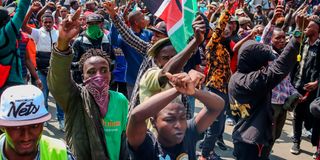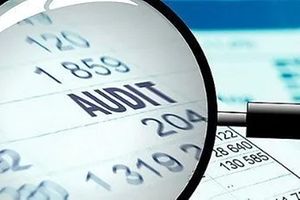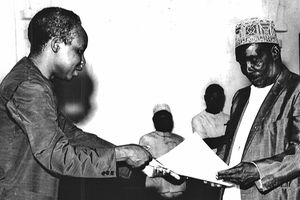
Anti-government protesters march along Moi Avenue in Nairobi on July 23, 2024.
One of the most frequent questions posed by those outside Kenya, is whether the country is poised to erupt once more, as it did during the Gen Z-led anti-tax and anti-corruption protests of 2024. It certainly feels that way. Kenyans on social media are seething with anger.
There is a growing sense that, in this era of viral content—where governance is dissected in 200 characters and protest anthems are reborn on TikTok—Kenya’s next revolution will not be broadcast on television. It will be memefied. The struggle for hearts and minds has shifted from the streets to the glow of tiny screens, where satire, packaged in bite-sized visuals, often outpaces government press releases and rebuttals.
Once brushed off as mere digital toys, memes are emerging as the new currency of political resistance in the country. They mock, mobilise and amplify dissent with breathtaking speed. As economic frustrations mount, young Kenyans—equipped with smartphones, a razor-sharp wit and an even sharper disdain for authority—are spearheading this charge. They are effectively rewriting the rules of protest, one viral image at a time.
With over 70 per cent of its population under 35 and an internet penetration rate of 97 per cent by 2024, Kenya is a nation primed for upheaval. Affordable smartphones and cheap data have transformed social media into a political gladiatorial theatre. Here, hashtags replace placards, and GIFs deliver both jabs and jest.
Self-censorship
Vast swathes of traditional media, hampered by bureaucracy, editorial timidity, or state, corporate and self-censorship, are floundering in the wake of this shift. Memes need no editorial green light. They strike swiftly, condensing complex grievances into a single, searing image. A bumbling politician paired with a sarcastic caption inflicts more damage—and travels further—than a 1,000-word opinion piece.
What is unfolding is a fierce tango between President William Ruto and a broad youthful coalition, many of whom were once his tech-savvy foot soldiers in the election of 2022. Consider the “Zakayo” meme: a biblical Zacchaeus recast as Ruto, perched in a tree, gripping tax receipts with a collector’s fervour. It started as a jest but swiftly morphed into an economic critique. Zakayo was not just Ruto; he embodied a leader who pledged to uplift the hustlers yet ended up taxing their last shilling.
Then there is “Kasongo”, borrowed from an old Lingala tune by Orchestra Super Mazembe, repurposed as a symbol of political evasion. Whenever Ruto seemed to sidestep accountability, the internet chorused, Kasongo, yeye!
Kenya has also provided Africa’s most striking example of memes evolving beyond mere mockery into rallying cries. The Gen Z-driven protests against the Finance Bill 2024 showed how digital activism can leap from screens to streets. What began as memes lampooning the government's perceived tax overreach soon swelled into a full-blown movement. “Ruto Must Go” trended relentlessly.Amid street clashes with police, tear gas and truncheons, memes kept the fight alive long after curfews descended and roads emptied.
A meme's power lies not just in critique but in unity. A single viral post can hit a million screens before breakfast, turning personal gripes into shared outrage.
Near-reckless playfulness
This is not exclusive to Kenya. The Arab Spring had its “dictator memes”; Nigeria’s #EndSARS campaign wielded online humour against police brutality. Yet Kenya adds its own flair—a blend of biting satire, rich cultural nods and a near-reckless playfulness that renders even grave issues digestible to a wide audience.
Politicians have tried to co-opt this culture. Ruto himself embraced the “Zakayo” label. But memes owe no allegiance. They remain tools of critique, twisting even governmental self-deprecation into fodder for the next satirical salvo. Efforts to clamp down on online spaces have only fanned the flames. Each attempt at censorship spawns fresh memes ridiculing the crackdown itself.
Today, Kenya stands at a crossroads, and memes serve as its mirror. The youth are restless. Economic hardship gnaws at many. Trust in institutions is crumbling. Yet amid this, a vibrant energy pulses—a refusal to swallow the status quo.
Memes seize that spirit, magnify it and broadcast it far and wide. But therein lies their Achilles’ heel. Memes wield immense power, yet they are fleeting. Still, their cumulative impact—eroding authority, raising consciousness, steering discourse—cannot be dismissed.
The perennial question lingers: will this digital momentum translate into tangible political action? Will the youth remain keyboard warriors, or will they carry their sarcasm to the ballot box? History hints that revolutions do not always arrive with fanfare. Sometimes, they begin with an idea, shared and reshared until it is impossible to ignore.
In Kenya, that idea might just arrive cloaked in a meme. But politicians are canny too. They know that if they bide their time, they might outlast the memes' shelf life.
The author is a journalist, writer, and curator of the "Wall of Great Africans". X @cobbo3





